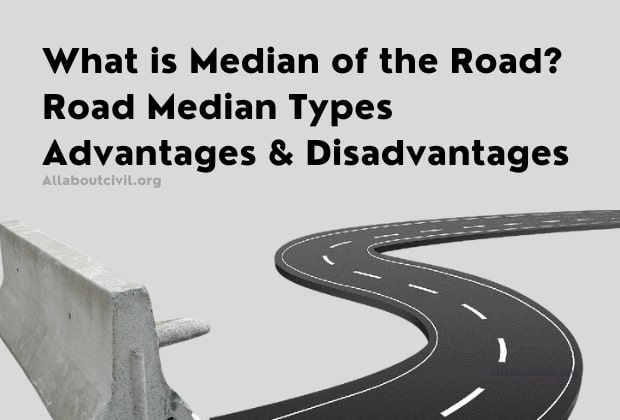What is Median of the Road?
The median of the road is the area or strip of land that separates the opposing lanes of traffic. It is typically a raised barrier or strip of pavement, designed to prevent vehicles from crossing over to the opposite side of the road.

The median can be made of various materials such as concrete, asphalt, or landscaping, depending on the design and function of the road. It also plays an important role in traffic safety by providing a physical barrier between opposing traffic and reducing the risk of head-on collisions.
Road Medians can come in different shapes and sizes depending on the road’s purpose and design. For example, a highway may have a wider median than a local street.
The design of the median can also impact the functionality of the road. For example, a median can be designed to allow for left-turn lanes or emergency vehicle access. Overall, medians on the road play an essential role in promoting safety and efficient traffic flow on roads.
Also Read – Highway engineering MCQ PDF | Download for Free
Types of Medians in a Road
There are several types of medians that can be used on a road, depending on the specific needs of the roadway and the surrounding environment.
Here are some common types of road medians:
1. Painted Median
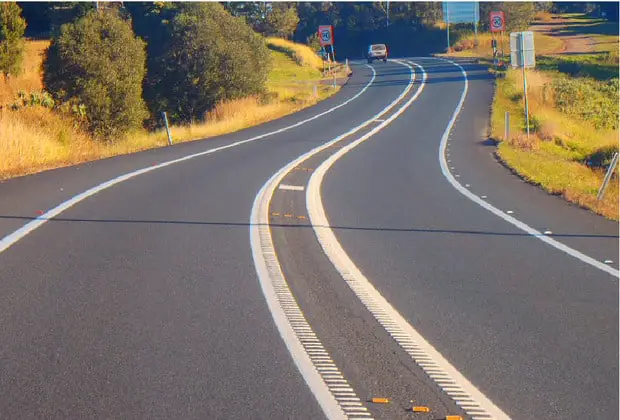
This is the simplest form of road median and is often used on low-volume roads. It is simply a painted line that separates the opposing lanes of traffic.
2. Raised Median

Raised medians are a physical barrier separating the traffic lanes. It can be made of concrete, brick, or other materials, and is often used on high-volume roads to prevent head-on collisions.
3. Flush Median
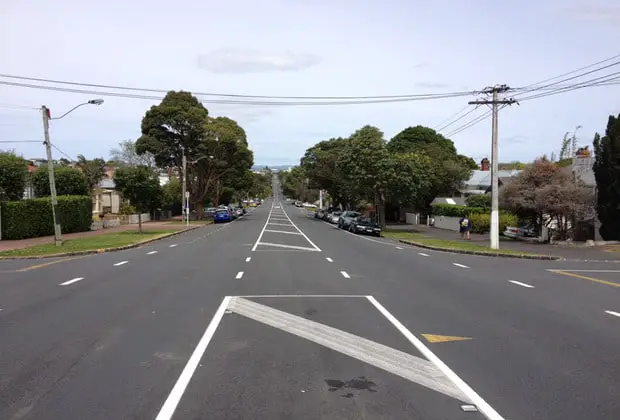
This is a paved area that is level with the roadway and is used to separate turning lanes from through lanes.
4. Landscaped median
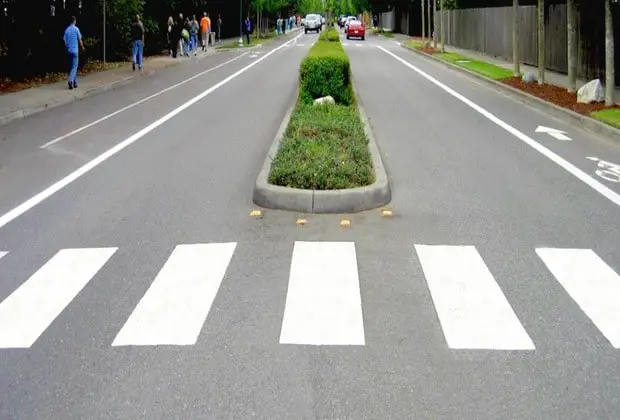
In this type of road median trees, shrubs, or other vegetation are planted to separate the lanes. It can provide an aesthetic benefit, as well as help to reduce the speed of traffic.
5. Cable median barrier
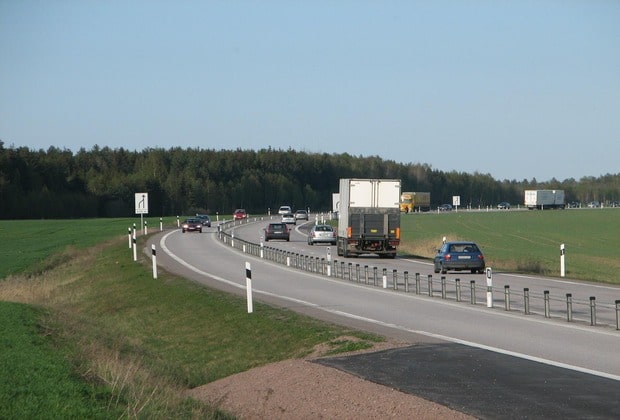
Cable median barrier is a type of median made of steel cables that are strung between posts. It is often used on highways to prevent vehicles from crossing over into opposing traffic.
6. Jersey barrier
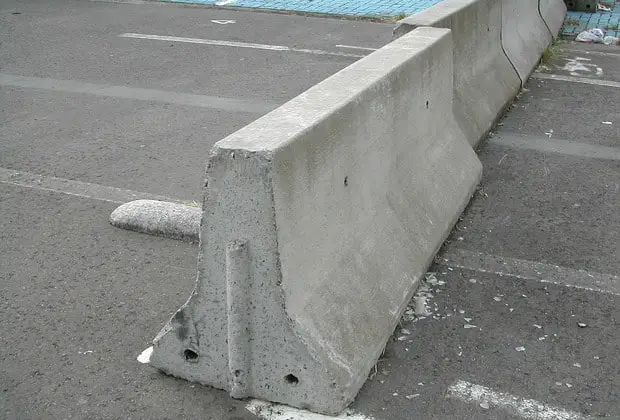
This is a concrete barrier that separates the opposing lanes of traffic. It is often used on high-speed roads to prevent head-on collisions.
7. Curbed median
This is a median that is bordered by a curb, which can be made of concrete or other materials. It is often used in urban areas to separate opposing traffic and provide a safe area for pedestrians.
Overall, the type of median used in a road depends on various factors, such as traffic volume, speed, and the surrounding environment. The design of the median of the road is essential in promoting safety and efficient traffic flow on roads.
Advantages of Road Median
The following are the advantages of having a median on a road:
Safety Benefits
The primary advantage of a median is safety. It provides a physical barrier between opposing lanes of traffic, reducing the risk of head-on collisions.
Reduced Congestion
By separating opposing lanes of traffic, a road median can help to reduce congestion on the road. It allows for smoother traffic flow, particularly in high-volume areas.
Improved Pedestrian Safety
Medians can also provide a safe area for pedestrians to cross the road, particularly in urban areas where there may be high foot traffic.
Reduced Noise and Air Pollution
Landscaped medians can help to reduce noise and air pollution by providing a barrier between the road and nearby residential areas.
Aesthetics
Landscaped medians can also enhance the aesthetics of the road, providing a pleasant view for drivers and pedestrians.
Improved Drainage
Some types of medians, such as flush medians, can help to improve drainage on the road, reducing the risk of flooding during heavy rainfall.
Overall, medians play an essential role in promoting safety, efficiency, and aesthetics on roads. The type of median used depends on various factors, such as traffic volume, speed, and the surrounding environment.
Disadvantages of a Median of the Road
While medians can provide benefits such as improved safety and aesthetics, they can also have drawbacks that need to be carefully weighed before deciding to implement them.
The following are the disadvantages of a median of a road:
Cost
The construction and maintenance of a median can be expensive, especially if it requires landscaping, irrigation, and lighting.
Reduced Capacity
A median reduces the capacity of the road by limiting the number of lanes available for traffic.
Limited Access
A median can limit access to businesses and residences along the road, making it more difficult for drivers to turn lanes or make U-turns.
Safety Concerns
In some cases, a median can create safety concerns for drivers, especially if it obstructs the line of sight at intersections.
Maintenance
Medians require ongoing maintenance, which can be a burden for local governments and taxpayers.
Limited Design Flexibility
The presence of a median can limit the design flexibility of the road, making it more difficult to accommodate changes in traffic patterns or future growth.
Overall, the advantages and disadvantages of a median depending on the specific circumstances of the road and the needs of the community it serves.
Also Read – Roads and Highways – Types of Highway Planning Surveys
FAQs On Median of the Road
A median of the road is the area or strip of land that separates the opposing lanes of traffic. It is typically a raised barrier or strip of pavement, designed to prevent vehicles from crossing over to the opposite side of the road.
Following are the different types of medians of the road.
Painted Median
Raised Median
Flush Median
Landscaped median
Cable median barrier
Jersey barrier
Curbed median

